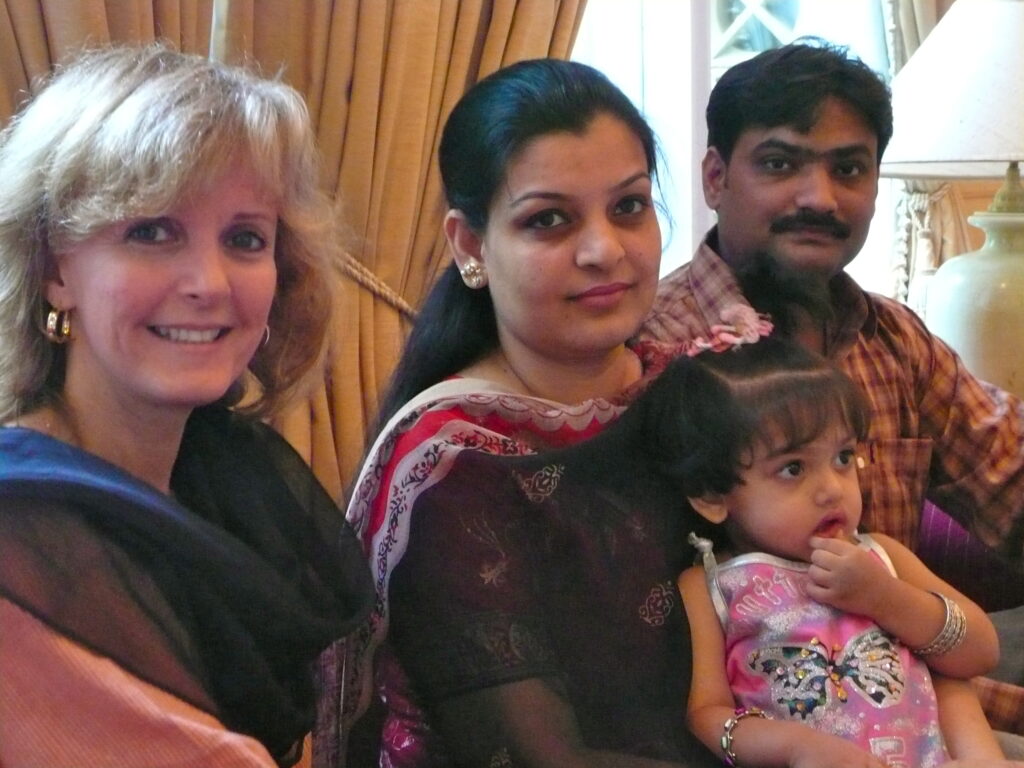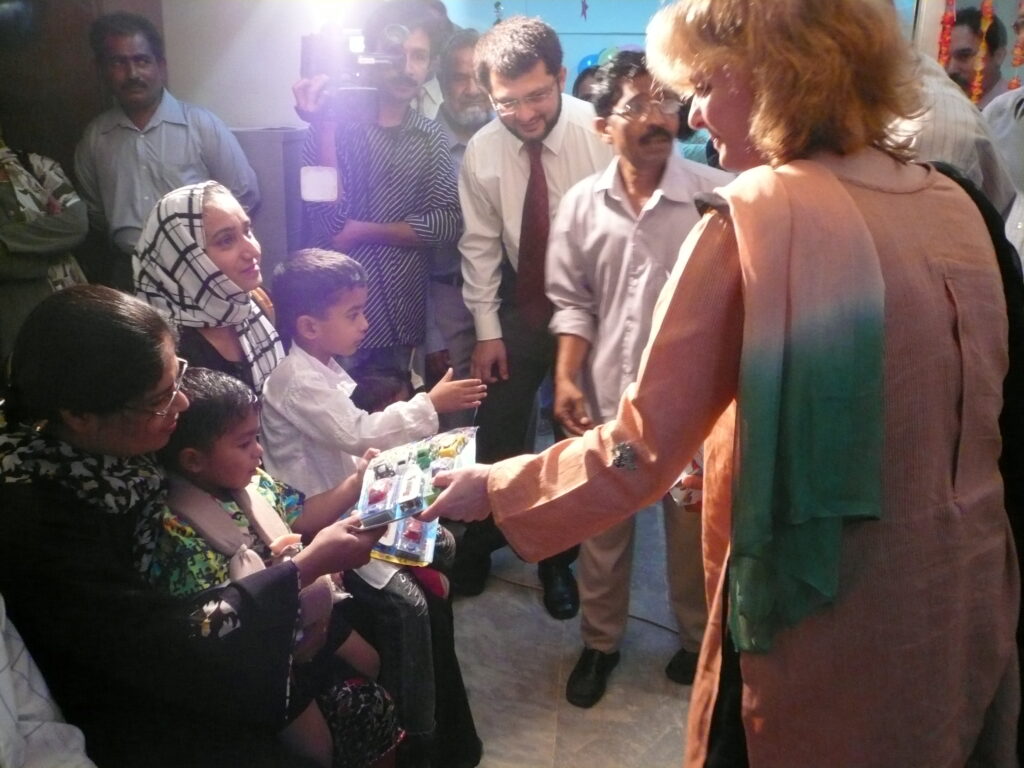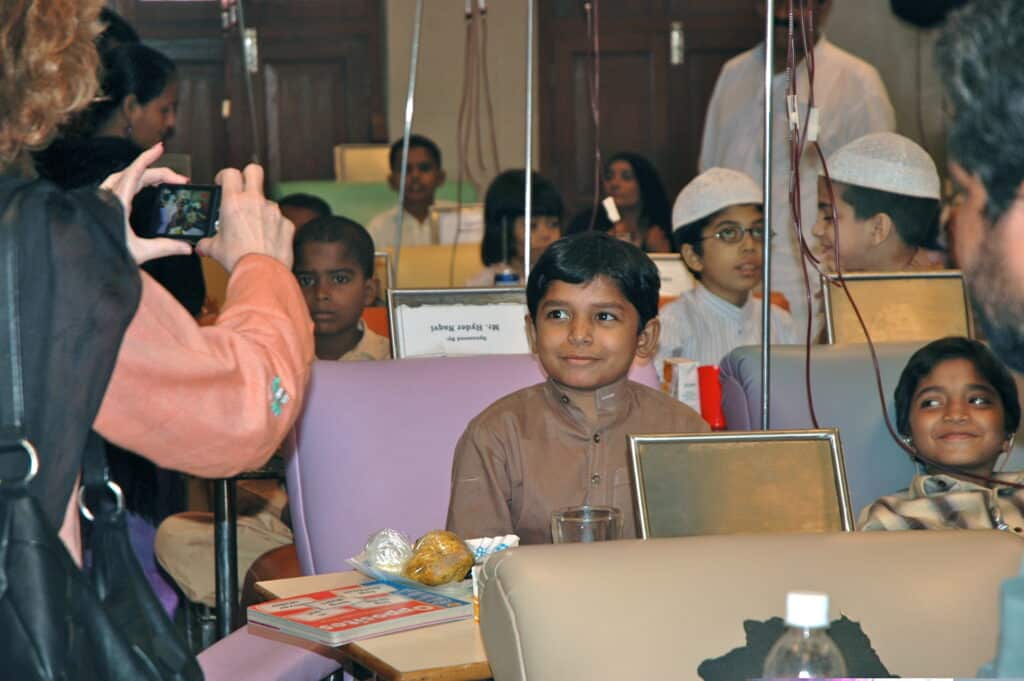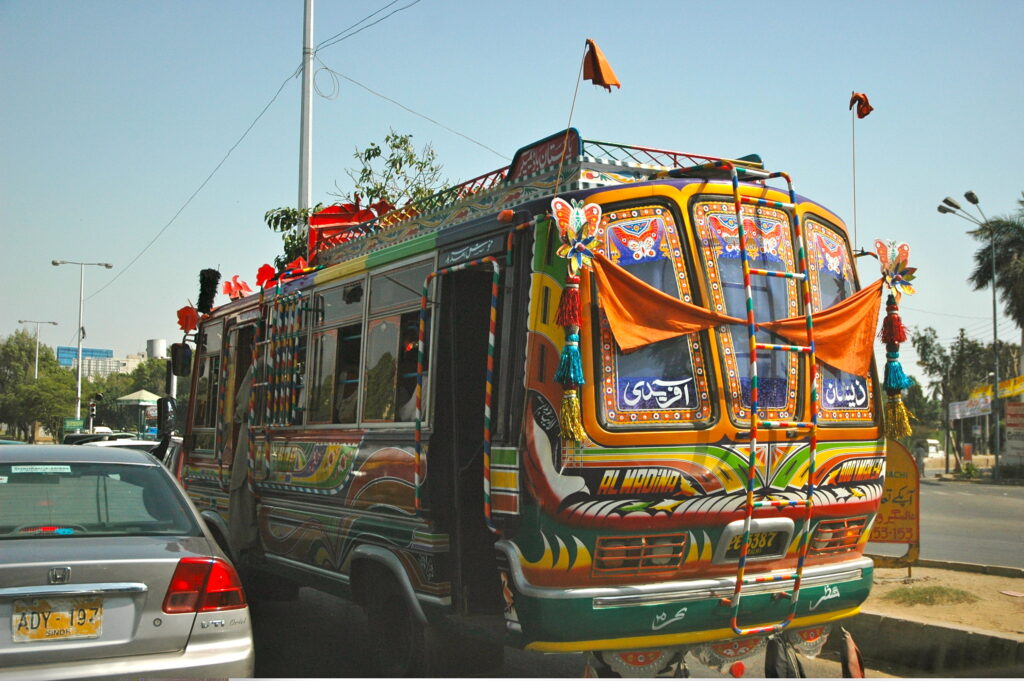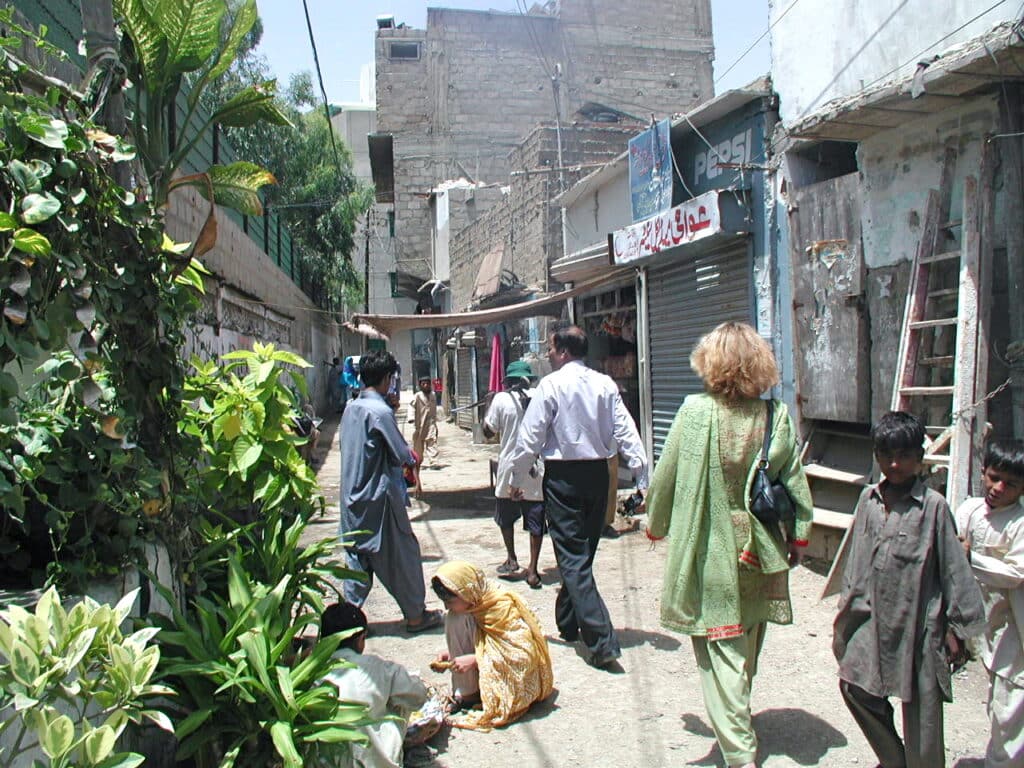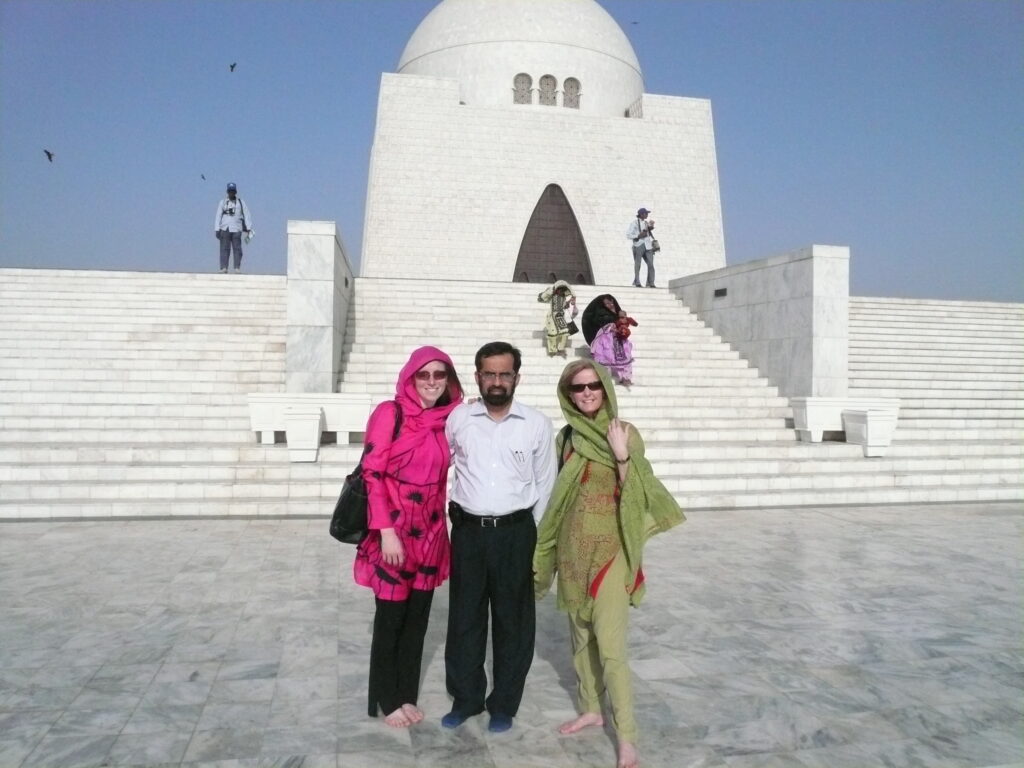Miracles in Pakistan
Assalam-a-laikum! I am home after a 24-hour flight and nine-day trip to Pakistan–the “Pure Land”–a place I can easily call a second home. This is my fourth visit, but the one with the most amazing results for hemophilia care. The years of hard work we have all expended are bearing their fruit for the patients who suffer with hemophilia. It was as if a miracle occurred: the government of Pakistan in the Sindh province will for the first time in history purchase factor for the patients! And, incredibly, will fund the first hemophilia treatment center in Karachi!
I had difficulty even finding the time to blog; Julia Long and I were kept on a rigid and packed schedule, to make the most of our visit. In our second day in Lahore (see the two previous posts to learn about the first half of our trip), we visited the Hemophilia Patients Welfare Society (HPWS) Lahore office, and visited with Dr. Shahla Sohail, a pediatrician and woman with VWD who helped establish the chapter. The chapter is well run and busy, attending to over 300 patients. It was a pleasure to see so many young men with hemophilia involved in running the chapter, including Masood Fareed Malik, the young but able president, and Farooq Ahmed, a young man who is employed by the society, and who I met eight years ago! It was fabulous to see this young man who was a dependent patient previously, now an employee, earning his own way and helping his fellow brothers with hemophilia.
Dr. Shahla had us meet some beneficiaries of Save One Life, who came to the headquarters. We also toured the clinic, and met with Bilal Ahmed, a 12-year-old boy, severely anemic and malnourished, who arrived to receive factor (see photo). He had been brought by his father in a journey that took six hours to get to the clinic. The child was shy with us and when asked if he knew who we were, replied, “They are fairies.” He had never quite seen the likes of us! We pledged to include him in the Save One Life child sponsorship program, and the Lahore chapter of course will continue to provide care for him.
We also drove quite a ways in the heat, dust and traffic to a village where another beneficiary, Adil, and his brother Zubair live. They are sponsored in the US by Patrick M. Schmidt, CEO of FFF Enterprises, who also sits on the board of Save One Life. We were given an incredible welcome by these very poor people, including a lovely shower of pink flower petals, and many hugs and smiles. Their joy at having foreign visitors to their humble home warmed our hearts. We learned that Adil was doing quite well but often missed school due to bleeds. Save One Life sponsorship money pays for a tutor to come to his home so he does not fall behind in school. We pledged to buy him a computer, which was his only wish. Everything in Pakistan revolves around family life and education, and computers are relatively cheap. It’s a great investment for a young man!
Then off to the airport for a two-hour flight to Karachi, a bustling port city that used to be the capital of Pakistan. Hot and humid, bursting with development and choked with traffic, Karachi is an amazing city that captivates. We had a reunion at the airport with members of the HPWS Karachi Chapter, and retired to the hotel for an overnight rest. The next two days would be packed for Julia and me.
On Friday, I first met with Ali Hakim, who works for Hakimsons, a distributor of factor products in Pakistan. He had arranged the logistics for an import of a rare donation of factor I product from CSL Behring in Germany. This was an amazing case: just weeks before leaving for Pakistan, we received notice that Alyzay, a two-year-old girl in Pakistan needed surgery to correct a cleft palate, but had factor I deficiency (see photo below). An operation would be difficult if not impossible. The product was not available in Pakistan. We called our contacts at CSL and within days had the product donation secured and on its way. Meeting the family and baby was touching and satisfying. The parents repeatedly thanked CSL, Hakimsons and Popular International, from where the original request had been made to us.
Next we met with the HPWS board members, and I was impressed with how far they have come in the seven years I had been away. They have more patients registered, are better organized, involve more patients and family members in running the society and are supported by a great roster of contributors. The headquarters are located in the Husaini Blood Bank, a prominent place for patients to go for infusions of plasma and sometime factor, when possible. On our visit on Friday, many patients had arrived to meet us. We shook hands and distributed donated toys to the children, who alternatively beamed their thanks or shyly buried their faces in their mothers’ colorful “shalwar kameez,” the comfortable traditional Pakistani clothing worn by females. Julia was able to see first-hand the people who benefited from our donations of factor from Project SHARE.
After the family meeting we toured the blood bank, and I was truly amazed at the renovations and improvement of the bank since I last visited. Air-conditioned, with TV sets for the children who often sit long hours getting treatment, clean and well staffed, the Husaini Blood Bank has evolved into a developed and enjoyable place to get treatment. Much congratulation goes to Dr. Sarfaraz Jafri and his team for their hard work. We took an excellent lunch at the elegant home of Mrs. Sarwari, who helps the society, and then were whisked off to visit patients in their homes. This part of the trip is always my favorite. I like patients to know that other people in other countries care about them and want to help, and I am always humbled by their faith and how they cope without sometimes even the basics in life, such as running water, electricity and of course, factor.
Friday evening, April 20, we were given a wonderful dinner at a restaurant by the HPWS. With us were so many friends and colleagues, including the HPWS staff, board members, doctors, and patrons. Pakistani food is simply delicious–spicy, varied and plentiful. After dinner we were given beautiful gifts in appreciation of our visit and our help. Last year, we donated over 1.5 million units of factor to Pakistan, which became our single largest beneficiary of aid. In the US, this amount would cost about $1.5 million.
Saturday, April 21, was a day that could go down in history for Pakistan hemophilia care in Karachi. Up till now, the government of Pakistan has not contributed to hemophilia care. Much of the work of organizations like mine and the World Federation of Hemophilia (WFH) is to eventually encourage the government to give support, by establishing hemophilia treatment centers and above all to purchase factor. Just last fall the Islamabad chapter was able to secure a 100,000 unit purchase form the government, something that had never before happened in Pakistani history. I know 100,000 does not impress those in developed countries, where this amount would only cover one patient for one year, but for Pakistan, this is a major breakthrough. Though Pakistan is a developing country, it ranks as one of the highest spenders on military as a percent of GDP. The government has money–and tapping into government funding for factor is the best hope for people with hemophilia, who currently must rely on plasma, which carries the risk of blood borne pathogens. And even plasma is out of reach of many people who live far, far from the cities and for whom transportation is unavailable. Plentiful factor, education, and home treatment must be the future of Pakistan.
Saturday morning, I met with the Sindh province senior Minister of Health, Mr. Syed Sardar Ahmad (see photo), with my colleagues Dr. Tahir Shamsi, hematologist consultant, and Dr. Shahid Noor, orthopedic surgeon and chairman of the HPWS Medical Advisory Board. Incredibly, after hearing our report of hemophilia needs in Pakistan, Mr. Ahmad on the spot promised to purchase factor–something that has never been done before in the Sindh province. On top of that, he also pledged to support the development of three HTCs in Karachi! This will mean true comprehensive care for all patients. The Sindh province is the second most populated in Pakistan, with over 30 million people, and Pakistan is the sixth most populous country on earth. This means a revolution in care for those in Sindh. We left the meeting beaming, our emotions soaring, with gratitude to the government of Pakistan, in particular to Mr. Ahmad, who so sincerely and obviously cares for people with hemophilia.
Later that day, Drs. Shamsi and Noor, and Saeed Ahmed of the HPWS, and Julia and I went to the Jinnah Postgraduate Medical Center, and asked the executive director, Dr. Rashid Jooma, if his center could be one of the HTCs in Karachi. We did this having just received the confirmation that morning from the minister of health! Rarely have I met a person who listened as deeply as Dr. Jooma. He took in all the statistics and anecdotes we shared about patients with hemophilia, and replied with insightful questions, to learn more. Ultimately, he gave his pledge that yes, this would be one of the HTCs. We could scarcely contain our joy. A true HTC with comprehensive care. This was surely a dream come true!
This is what we have all been working for, for at least eight years for me, and longer for the HWPS. You all know I have a son with hemophilia, who has the best medical care in the world, and all the factor he needs. We have longed to give back to the world, not just in charitable donations, like money or factor, but in encouraging the governments and people of the countries we visit to also invest in hemophilia care, to provide comprehensive, long-term care for their own people. While I love the Pakistani boys with hemophilia as though they were my own sons, they are not in reality. They belong to the Pakistanis, who must care for their own. After this day, they are further on that road than we all even dreamed they would be.
We celebrated that evening with a grand reception at the home of Dr. Ehsanullah, affectionately and reverently known as the Founder of Hemophilia Care in Pakistan. He welcomed about 50 patients, doctors, patrons and HPWS members for a feast. There were many speeches, congratulating the hard work of everyone present, congratulating the accomplishments of the day. In response to an electrifying speech by Dr. Shamsi, attendees began pledging support for children with hemophilia through Save One Life. In about 10 minutes, we had an additional 43 children with hemophilia sponsored! This is the equivalent to a donation of about $10,000 that will go directly to the HPWS and families. It was another miracle in a day of miracles. And the biggest and most stunning surprise of all was when Mr. Iqbal Billoo, who runs Popular International, a private company that supports the HPWS, and is Pakistan’s distributor for Koate DVI and one of the only providers of factor concentrate in the country, pledged to give for free factor to any family who could not afford it. I honestly cannot tell you in words what this means; I cannot adequately express my gratitude for this profound gift. This is unheard of and unprecedented. Our deepest thanks go to Mr. Billoo and his company, for their complete devotion to patients who suffer with hemophilia, and for rewarding our hard work.
Thanks to everyone for an astoundingly productive and enjoyable visit: to the HPWS in Islamabad, Rawalpindi, Lahore and Karachi for their great progress and achievements, and for their hospitality to us; to Popular International for their attentive help to ensure we were cared for in each city, and for escorting us to our various meetings; to the health ministries we visited; to the many hospitals and clinics we toured; and above all, to the hemophilia patients, for attending our World Hemophilia Days, for inviting us to their homes, to share in their struggles and family lives, and who rely on us for help.
Pakistan is a country stimulating to the senses: we recall the waves of heat and crush of humanity in Karachi, a city of 15 million; women swathed head to toe in black burkas; the magnificent architecture in Lahore; recitation of prayers over city-wide intercom five times a day; the incessant beeping of cars and buses like wayward alarm clocks; the pungent scents of rich spices from roadside vendors; the fragrant wafts of jasmine flowers wrapped around bracelets bought from young street hawkers… these things no longer awe me as when I first traveled, but still awaken my senses and fill me with life and joy. Pakistan International Airlines promotes Pakistan as “Heaven on Earth,” and I can see why. It is not like a sunny island in the Caribbean to visit–it’s not that kind of heaven. It has massive poverty along with its majestic mountains; pain along with its pride. But it is heaven in terms of its exquisite beauty–which I see reflected in its people, topography, history and potential. Sadly, the west has such a distorted view of Pakistan. It is a country with warm citizens, full of faith, compassion for one another, and used to working hard. Pakistanis are devoted to family and education; probably there are no better parents on earth. We were treated with kindness and graciousness everywhere we went. The doctors are among the best on the world. All we need is a little more time, to improve hemophilia care, with faith, discipline and unity, which happens to be the motto of Pakistan. Faith, discipline, unity…this past week has shown us that belief in these can move mountains and make miracles.
See all the photos of the trip here.
(Photos: Tomb of Jinnah, founder of Pakistan; boy in Lahore at the HPWS for treatment; thalessemia patient at Husseni Blood Bank; Laurie and Julia get tour of blood bank; meeting with Mr. Ahmad, health minister of Sindh province; home visit to new beneficiaries of Save One Life)
